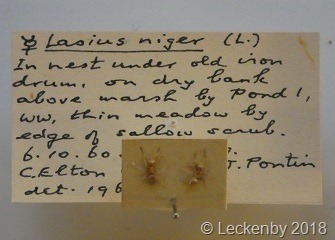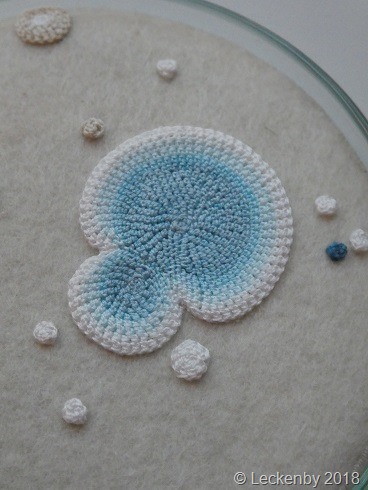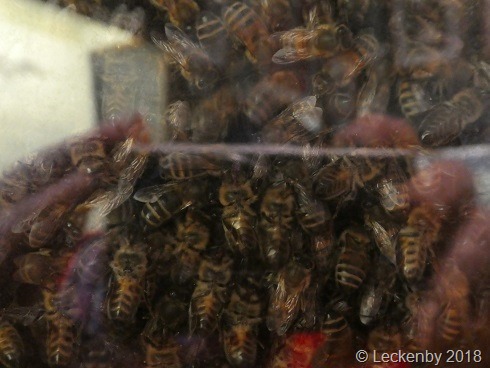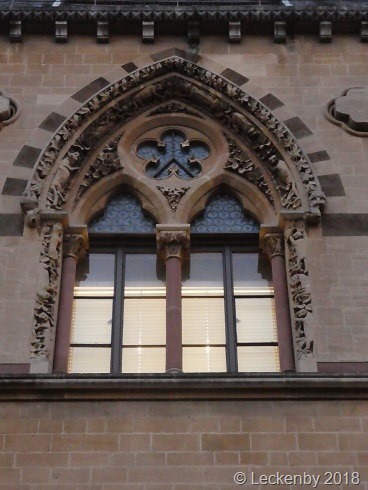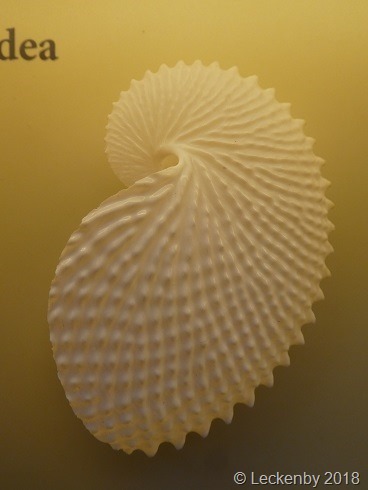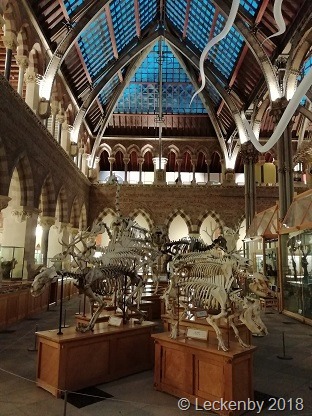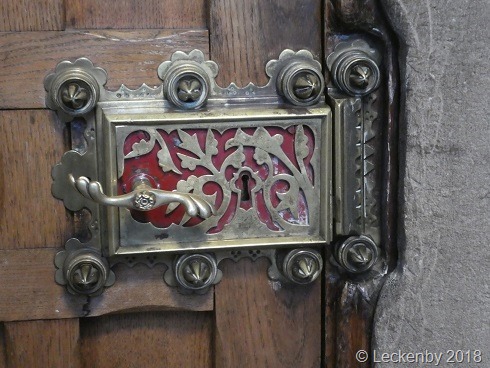Aristotle Bridge
The weather wasn’t conducive for a return visit to Blenheim today, we’d only be allowed into the park anyway as Christmas displays were being installed. So instead we decided to head back to the Natural History Museum we’d only glanced at yesterday. The walk there was bloomin’ chilly and we were glad of the small amount of heat once inside.
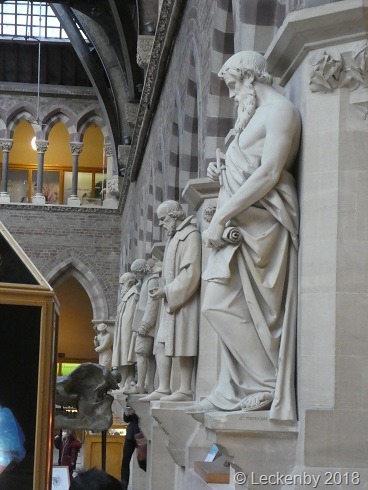
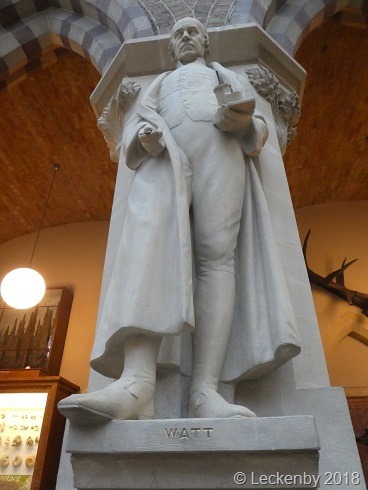 We suspect the museum has been updated from it’s original Victorian self. Here is where in 1860 representatives of both the church and science debated the subject of evolution. Stone carved scientists look down on the exhibits and those viewing them, making sure all is in order.
We suspect the museum has been updated from it’s original Victorian self. Here is where in 1860 representatives of both the church and science debated the subject of evolution. Stone carved scientists look down on the exhibits and those viewing them, making sure all is in order.
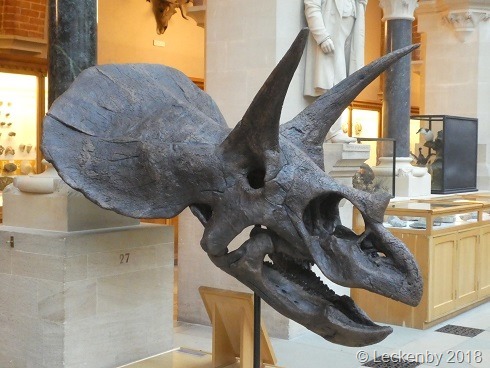
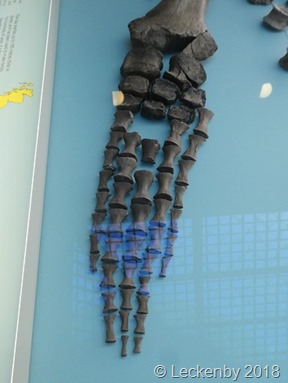
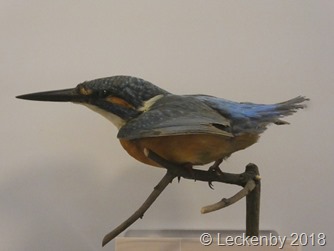 There are still display cases of insects, birds etc, but the contents have been modernised. The large displays, dinosaur skeletons and other bones sit in the main aisles on the ground floor with stuffed birds and fossils on display around them.
There are still display cases of insects, birds etc, but the contents have been modernised. The large displays, dinosaur skeletons and other bones sit in the main aisles on the ground floor with stuffed birds and fossils on display around them.
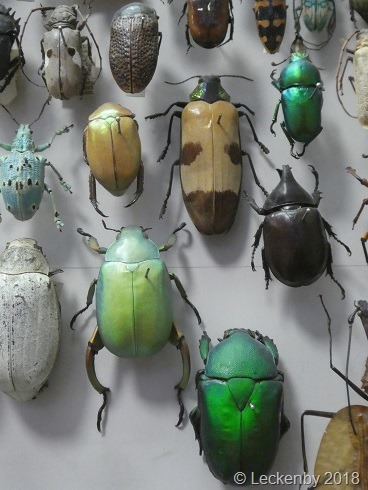
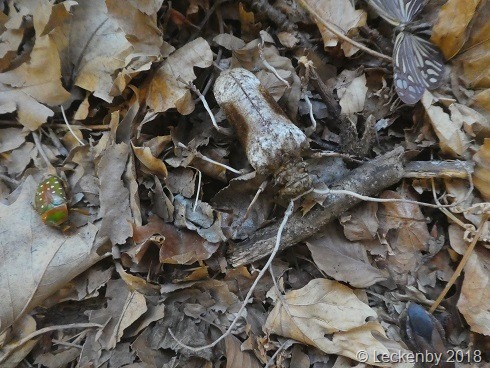 On the first floor there are displays of insects and bugs.
On the first floor there are displays of insects and bugs.
Here a Bacteria exhibition gets you to match the good with the bad and see which ones would win in your gut. An artist took everyday objects and pressed them onto petri dishes to see what bacteria would grow. From these she has then crocheted in minute detail the results. It took a while for me to realise that they were made up of the tiniest of stitches, it’s amazing what a pretty result a plastic unicorn gave.
Also on the first floor is a bee hive. Not your normal type, but one built for display. A large glazed area means that you can see straight into the hive. Today those bees near the top, seemed (we hope) to be asleep. But those nearer the bottom and the outside world were more active, a constant movement from these could be seen, enough to make you back squirm. The display case sits on top of a perspex tunnel that leads to the outside world where they plan to add a roof top garden for the bees. Through the tube you can (on a normal warm day) watch the bees heading off and returning with pollen on their hind legs.
Other living displays sit in glass cases around the gallery. Stick insects and spiders, although one spider did seem very absent. Tilly would have liked this floor, but I suspect these spiders would have fought harder than the normal eight legged friends she finds!
Several things stood out from the collection.
An Argonauta nodosa shell collected in 1786 was stunning. It is the shell of a pelagic octopus and must have been about 10 cm long. Isn’t nature amazing when it produces something so beautiful.
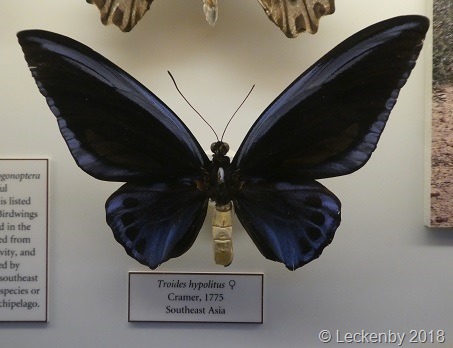 Butterflies with their incredible markings.
Butterflies with their incredible markings.
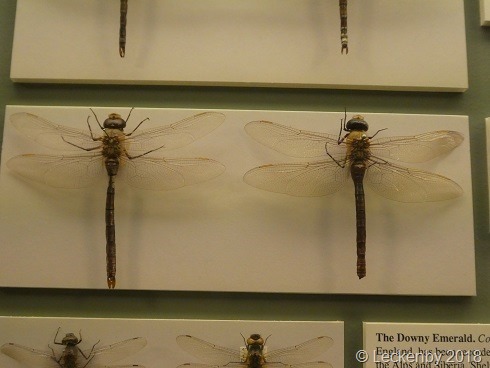
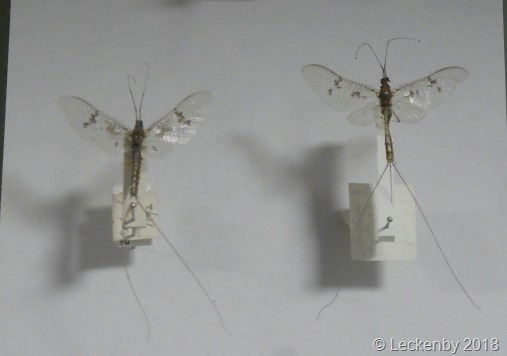 Dragonflies that have lost their colouring through the centuries and one for Tilly, Mayflies Yo-yo flies!
Dragonflies that have lost their colouring through the centuries and one for Tilly, Mayflies Yo-yo flies!
We’d maybe seen the more interesting bits yesterday, but the building kept giving more angles to view itself.
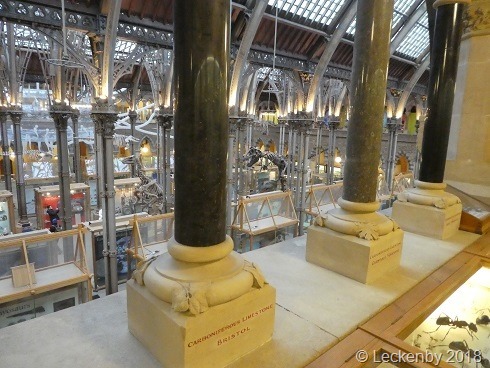
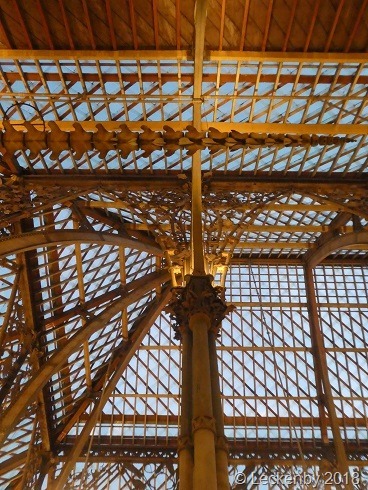 The individual pillars of British stone continue upstairs, these originally cost £5 to have made. It was hard to choose which was our favourite and astounding that so many similar stones in name could look so different.
The individual pillars of British stone continue upstairs, these originally cost £5 to have made. It was hard to choose which was our favourite and astounding that so many similar stones in name could look so different.
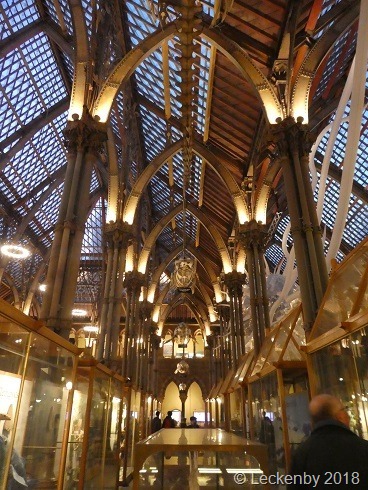 We had arrived later in the day, so as the sun started to set the lights inside brought out new details and emphasised the soaring arches above our heads. The building was upstaging all of the exhibits.
We had arrived later in the day, so as the sun started to set the lights inside brought out new details and emphasised the soaring arches above our heads. The building was upstaging all of the exhibits.
0 locks, 0 miles, 0 bridges, 2nd visit, 1 guided tour of Pitt Rivers, 2 many words, 45367 bees, 128 rocks, 192 capitals, £5 each in 1850, 0 Pink Zebra Beauty Tarantula, 1 freezing day, 3% of Antarctic glacier ice is made from Penguin urine!

